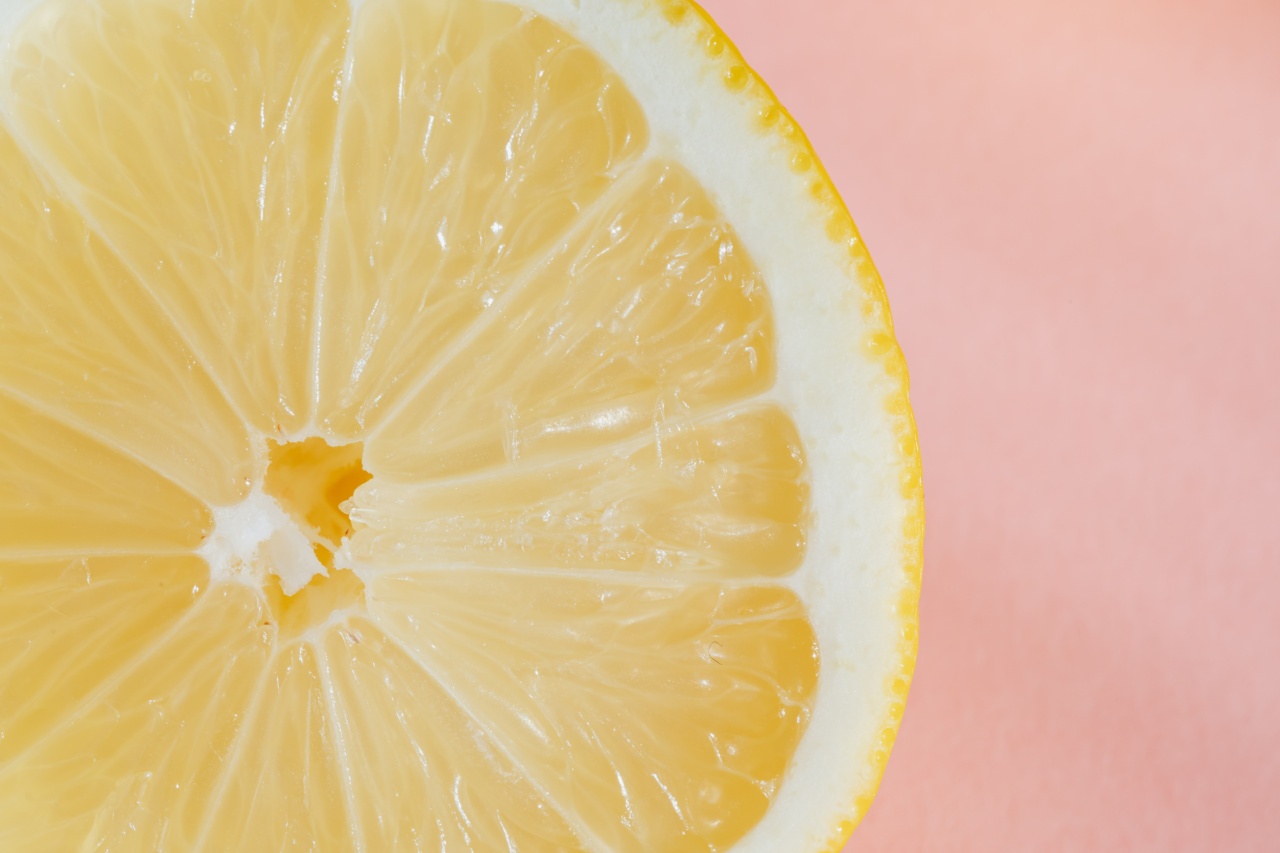Having a bright, white smile is often associated with good oral hygiene and overall attractiveness. However, certain foods and beverages can cause our teeth to become yellow or discolored.
This discoloration can be both unsightly and bothersome, leading many individuals to seek solutions for a whiter smile. In this article, we will explore the various reasons why some foods can lead to yellowing of the teeth, as well as provide tips on preventing and treating teeth discoloration.
Understanding Tooth Discoloration
To fully comprehend why certain foods can yellow teeth, it is important to understand the structure of our teeth. The outermost layer of our teeth, known as the enamel, is the hard, protective shell that safeguards the dentin layer beneath it.
The dentin layer contains the natural color of our teeth, which is typically yellowish. When the enamel becomes stained or worn down, the yellowish hue of the dentin becomes more visible, resulting in teeth discoloration.
Various factors can contribute to tooth discoloration, including genetics, poor oral hygiene, tobacco use, aging, and of course, consumption of certain foods and beverages.
While it is impossible to change our genetics or halt the aging process, we can control the foods we consume to minimize the risk of tooth discoloration.
Foods that Can Yellow Teeth
1. Coffee and Tea.
Coffee and tea are two of the most commonly consumed beverages worldwide. However, both of these drinks contain tannins, which are plant-based compounds that can easily bind to the enamel, resulting in stains.
Darker blends of coffee and tea, such as black coffee or black tea, contain more tannins and are more likely to cause tooth discoloration.
2. Red Wine.
Red wine is another culprit when it comes to yellowing teeth. It contains both tannins and chromogens, which are pigmented molecules that can stain the enamel.
The acidity of red wine can also weaken the enamel, making it more susceptible to discoloration. White wine, although less pigmented, is acidic and can also contribute to teeth staining.
3. Berries.
While berries are considered highly nutritious, they can also be responsible for teeth discoloration. Blueberries, blackberries, and other dark-colored berries contain chromogens that can adhere to the enamel.
Additionally, their intense color pigments can contribute to the yellowing of teeth.
4. Tomato-Based Sauces.
Tomato-based sauces, such as pasta sauce or ketchup, are acidic and highly pigmented, which makes them a potential cause for teeth staining.
The acidity erodes the enamel, leaving it vulnerable to stains, and the vibrant red color of these sauces can gradually tint the teeth.
5. Curries.
Curries, particularly those with a vibrant yellow or orange hue, contain spices like turmeric, which is known for its staining properties. The rich pigments in curries can penetrate the enamel, causing teeth to yellow over time.
6. Balsamic Vinegar.
Balsamic vinegar, commonly used in salad dressings, has a dark color and high acidity. Regular consumption of balsamic vinegar can erode the enamel and leave the teeth susceptible to staining.
Additionally, it can create a dark film that adheres to the teeth, intensifying their yellow appearance.
7. Citrus Fruits.
Citrus fruits, such as lemons, oranges, and grapefruits, are highly acidic. The high acid content can erode the enamel, making the dentin layer more visible.
Although citrus fruits themselves are not pigmented, their acidic nature can contribute to tooth discoloration.
8. Soda and Cola.
Soda and cola beverages are not only high in sugar but also highly acidic. The combination of sugar and acid can corrode the enamel, exposing the yellowish dentin underneath.
Darker colas, such as cola with caramel coloring, can additionally stain the teeth.
9. Soy Sauce.
Soy sauce, commonly used in Asian cuisine, is a dark and highly pigmented condiment. The dark color particles can penetrate the enamel over time, leading to teeth discoloration.
10. Sweets and Candies.
Most candies and sweets, especially the brightly colored ones, contain artificial dyes and high sugar content.
The artificial dyes can cling to the enamel, staining the teeth, while high sugar content promotes the growth of bacteria, which further leads to dental issues and discoloration.
Prevention and Treatment
While avoiding these foods entirely may not be realistic or desirable, there are several preventive measures and treatment options available to combat tooth discoloration:.
1. Maintain Good Oral Hygiene.
Regular brushing and flossing help remove plaque and stain-causing substances, protecting the enamel from discoloration. It is recommended to brush at least twice a day and floss at least once a day.
2. Rinse Your Mouth.
Rinsing your mouth with water after consuming foods or beverages that are known to cause staining can help wash away some of the pigments and acids, reducing their impact on the teeth.
3. Use a Straw.
When drinking beverages that can stain teeth, such as coffee, tea, or cola, using a straw can minimize the contact between the staining liquid and your teeth.
4. Limit Consumption.
Reducing the frequency and amount of food and beverages known to cause tooth discoloration can significantly help in preventing yellowing of the teeth. Moderation is key.
5. Maintain Regular Dental Cleanings.
Professional dental cleanings can remove surface stains and keep your teeth healthy. Dentists may also offer treatments such as professional teeth whitening to address more stubborn stains.
6. Whitening Toothpaste or Strips.
Using whitening toothpaste or whitening strips can be an effective way to eliminate surface stains and brighten the teeth.
However, it is essential to follow the instructions carefully and consult with a dentist if you have sensitive teeth or underlying dental issues.
Conclusion
While there are many foods and beverages that can contribute to yellowing of the teeth, it is important to remember that moderation and good oral hygiene practices are key in maintaining a healthy, bright smile.
By being mindful of the foods we consume and taking preventive measures, we can minimize the risk of tooth discoloration and enjoy a confident, white smile.





























